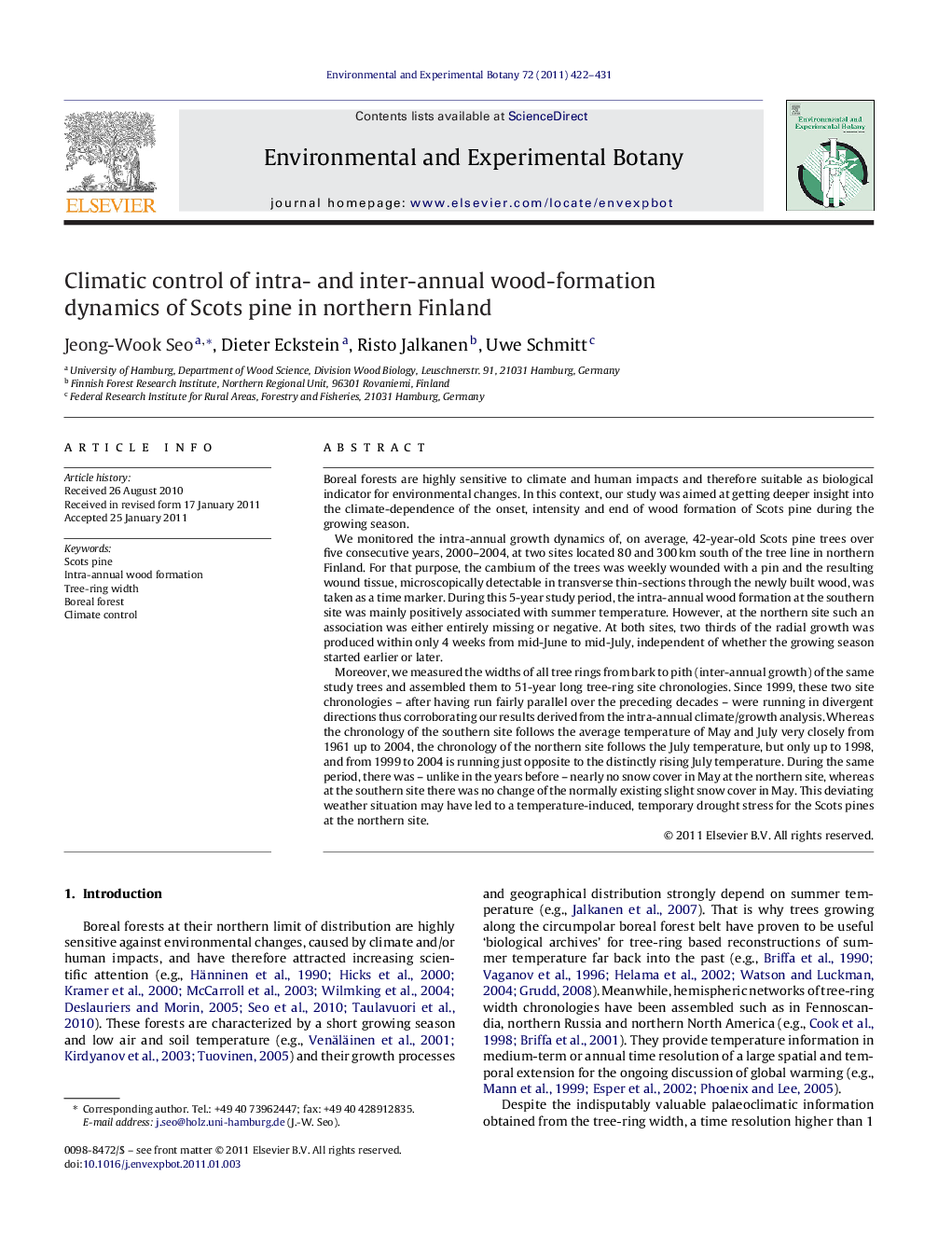| Article ID | Journal | Published Year | Pages | File Type |
|---|---|---|---|---|
| 4554895 | Environmental and Experimental Botany | 2011 | 10 Pages |
Boreal forests are highly sensitive to climate and human impacts and therefore suitable as biological indicator for environmental changes. In this context, our study was aimed at getting deeper insight into the climate-dependence of the onset, intensity and end of wood formation of Scots pine during the growing season.We monitored the intra-annual growth dynamics of, on average, 42-year-old Scots pine trees over five consecutive years, 2000–2004, at two sites located 80 and 300 km south of the tree line in northern Finland. For that purpose, the cambium of the trees was weekly wounded with a pin and the resulting wound tissue, microscopically detectable in transverse thin-sections through the newly built wood, was taken as a time marker. During this 5-year study period, the intra-annual wood formation at the southern site was mainly positively associated with summer temperature. However, at the northern site such an association was either entirely missing or negative. At both sites, two thirds of the radial growth was produced within only 4 weeks from mid-June to mid-July, independent of whether the growing season started earlier or later.Moreover, we measured the widths of all tree rings from bark to pith (inter-annual growth) of the same study trees and assembled them to 51-year long tree-ring site chronologies. Since 1999, these two site chronologies – after having run fairly parallel over the preceding decades – were running in divergent directions thus corroborating our results derived from the intra-annual climate/growth analysis. Whereas the chronology of the southern site follows the average temperature of May and July very closely from 1961 up to 2004, the chronology of the northern site follows the July temperature, but only up to 1998, and from 1999 to 2004 is running just opposite to the distinctly rising July temperature. During the same period, there was – unlike in the years before – nearly no snow cover in May at the northern site, whereas at the southern site there was no change of the normally existing slight snow cover in May. This deviating weather situation may have led to a temperature-induced, temporary drought stress for the Scots pines at the northern site.
Research highlights► 2/3 of annual growth of pine in boreal forests is built within 4 weeks in June/July. ► Wood formation is maximum around summer solstice and not in the warmest season. ► Lack of May snow fall combined with a warm May–July may cause a water deficit. ► Intra-annual and inter-annual wood formation may reflect different control factors.
